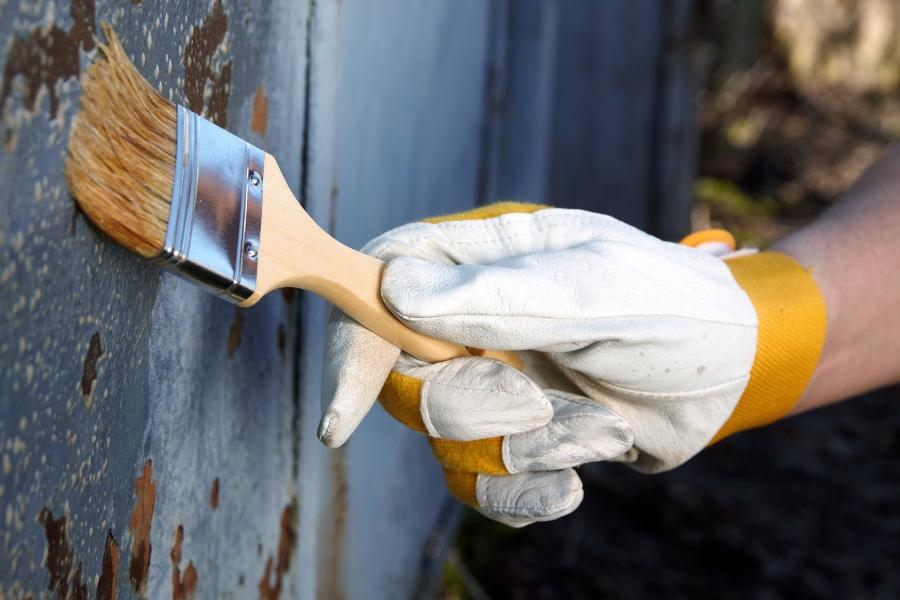« Steel and Non-Ferrous Metals: What Paint Stripping Options are Available? »
High-gloss coatings are a pleasure to behold. However, their primary purpose is to protect painted items from corrosion and mechanical damage. When the paint is worn off, it loses its appeal, and the piece might become obsolete. Complete restoration of damaged paint layers or parts that were accidentally painted during production is definitely possible. Before repainting, thorough coating removal is essential to clear the surface of old paint remnants and other contaminants. Various methods and paint removal agents can be used to strip coatings from metal.
The Material Determines the Type of Paint Stripping
Iron is one of the most widely used metals, whether as cast iron or high-quality stainless steel. Non-ferrous metals (NF-metals) refer to metals that either contain no iron or have less than 50% iron in their alloy. Copper and zinc are examples of pure non-ferrous metals, while bronze and brass are examples of alloys classified as NF-metals. A pragmatic classification is based on oxidation behavior: ferrous metals rust, while non-ferrous metals do not. Every type of metal and alloy chemically reacts in a unique way, so paint removal agents and methods must be tailored accordingly.

Different Paint Stripping Methods
To completely remove paint from a metal surface, three different methods can be used: thermal, chemical, or mechanical removal.
High and Low Temperatures – The Method of Choice for Steel and Stainless Steel
In thermal paint removal, the temperatures are high enough to break the chemical bonds within the paint components. When placed in a pyrolysis oven, at temperatures around 400°C to 450°C (754°F to 842°F), the surface coating literally turns to dust. Other methods only soften the coating. Pyrolysis is effective but very energy intensive. However, it can be made more environmentally friendly through heat recovery. Both high and low temperatures can be used to remove a coating.
When exposed to liquid CO2 or liquid nitrogen, a surface coating becomes so brittle that it can then be mechanically removed.
Thermal paint removal is most often used for steel and stainless-steel parts that are thermally resistant. This method is especially suitable when the paint layer to be removed is very thick. Typically, a mechanical or chemical post-treatment follows the thermal treatment. Thermal removal is not suitable for non-ferrous metals, such as cast iron, copper, or aluminum.
The Chemical Option for Temperature-Sensitive Parts
In chemical paint removal, either the bonds in the paint are broken, or the adhesion of the paint layer to the surface is disrupted. In both cases, the paint detaches. Chemical paint removers based on acidic or alkaline compounds can be used to strip metal. A third alternative is organic solvent-based paint removers. The process can also vary between high-temperature and low-temperature paint removal. Chemical paint removal is generally suitable for metal and non-ferrous metal parts. Surface type, metal type, and the geometry of the part will determine which remover and method should be chosen.
Hot or Cold Paint Removal – The Optimal Method for Every Part
Hot paint removal takes place in baths at temperatures up to 280°C (536°F), depending on the chosen remover. This method is appropriate for small parts and is particularly useful for parts with challenging geometry. After paint removal, the part is rinsed and then dried. This process is quick but requires specially designed equipment. If solvent-based paint removers are used, the equipment must be sealed to prevent solvent vapors from escaping and to reduce fire or explosion risk. In cold paint removal, the remover is applied directly with a brush, nozzle, or spatula. To strip the metal, the solution must be left to work for a certain amount of time before being removed along with the loosened paint. The longer duration is a drawback, but it requires no special equipment and uses minimal energy since no heating is required .
Choosing the Right Paint Stripper for Every Metal Type
Sensitive surfaces, such as galvanized parts that must remain intact, should be treated with organic paint removers. These agents are also preferred for parts made of aluminum and other non-ferrous metals. Whether hot removal is chosen, or lower temperatures and spray applications are used, depends on the specific case. Steel and cast iron are less sensitive and work well with alkaline based removers. These are delivered as concentrates and diluted before use. Hot paint removal at around 90°C (194°F), has proven effective for these materials. Typical items that are stripped this way include steel cables, spring-loaded hangers, and magnets. For aluminum parts, like profiles or rims, acidic paint removers are often chosen, typically used in baths at around 80°C (176°F).

The Simplest Way to Strip Metal? Manual and Blasting Methods
Sanding, brushing, or scraping are typical manual methods used to strip metal of paint. For larger surfaces, where manual work is impractical, blasting methods are used. Paint can be removed using air pressure, sandblasting, dry ice blasting, or high-pressure water blasting. In high-pressure water stripping, for example, water is sprayed onto the part at up to 3,500 bar to remove the paint layer. These methods are ideal for parts that cannot be stripped thermally or chemically. High-pressure water stripping can also remove coatings from very bulky parts. Objects with damaged paint on the surface must be thoroughly stripped before repainting. Whether a classic car is due for a fresh coating or production errors need to be corrected—today, there is a suitable paint remover and method available for every type of metal, be it steel or aluminum.
 Kluthe Magazine
Kluthe Magazine

